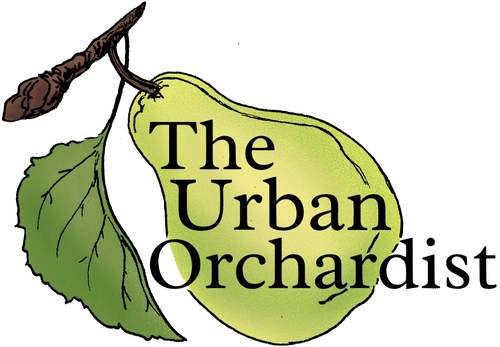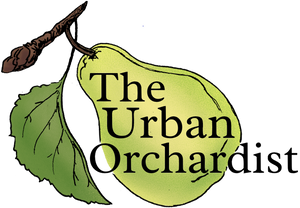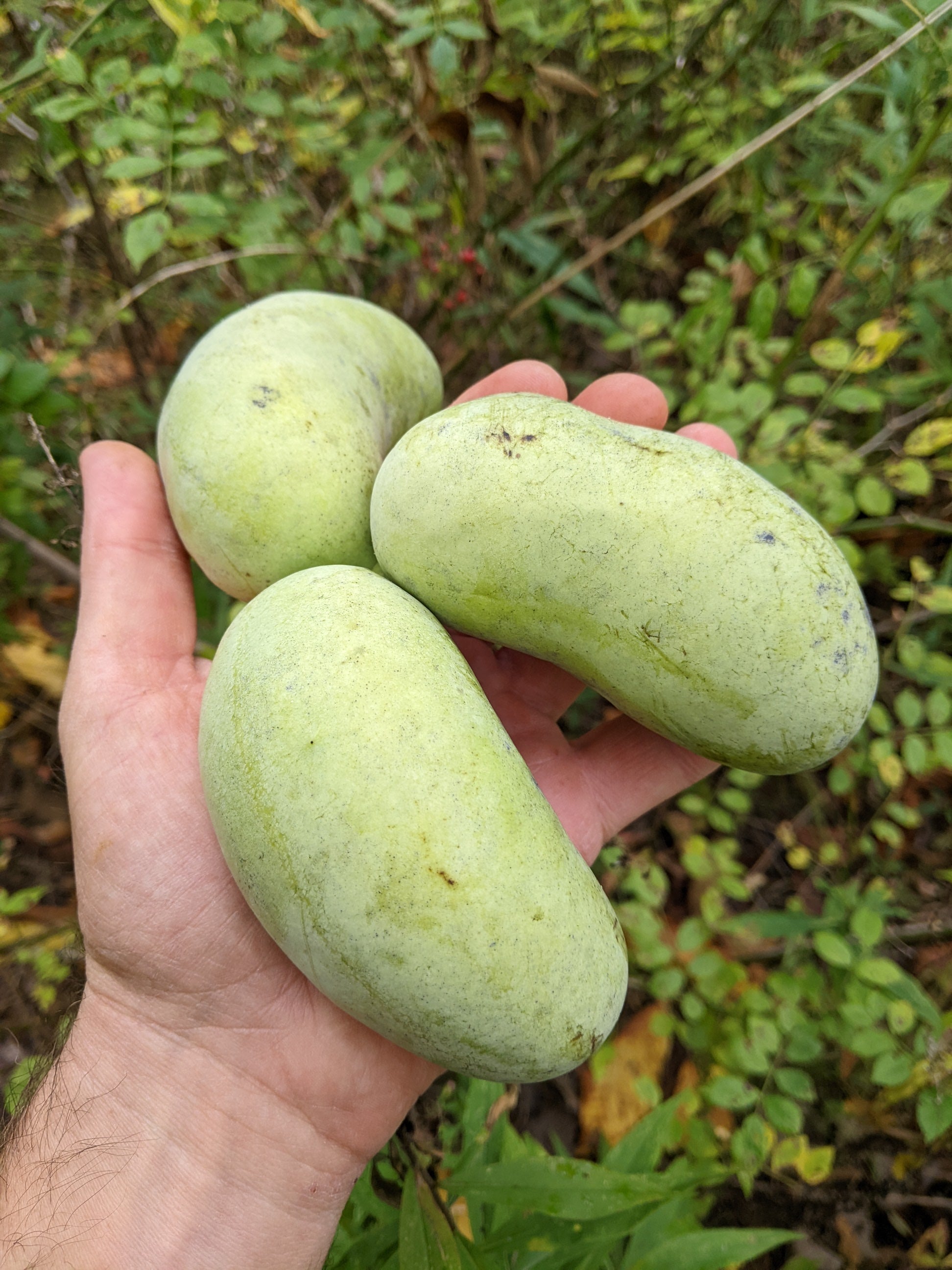
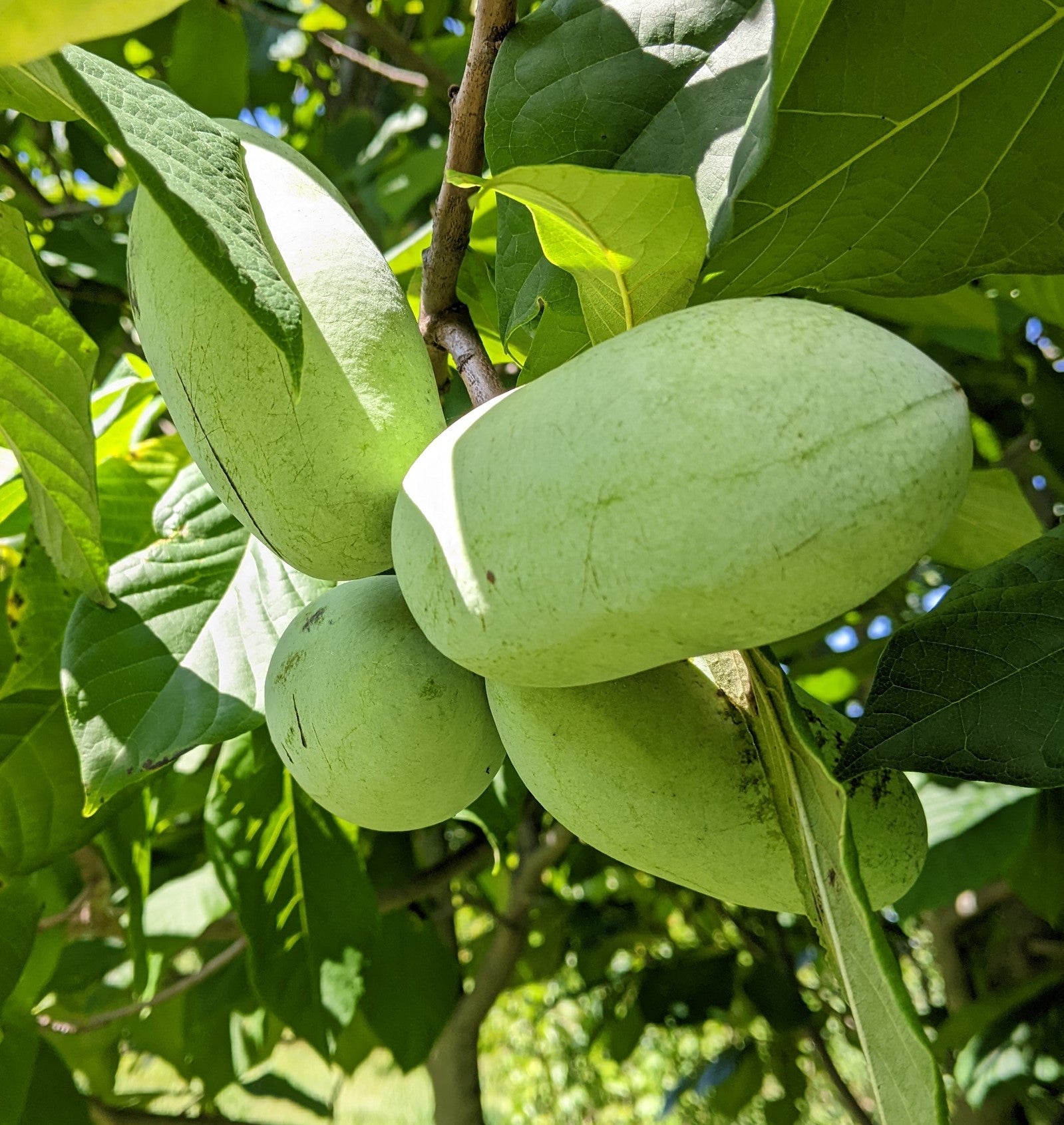
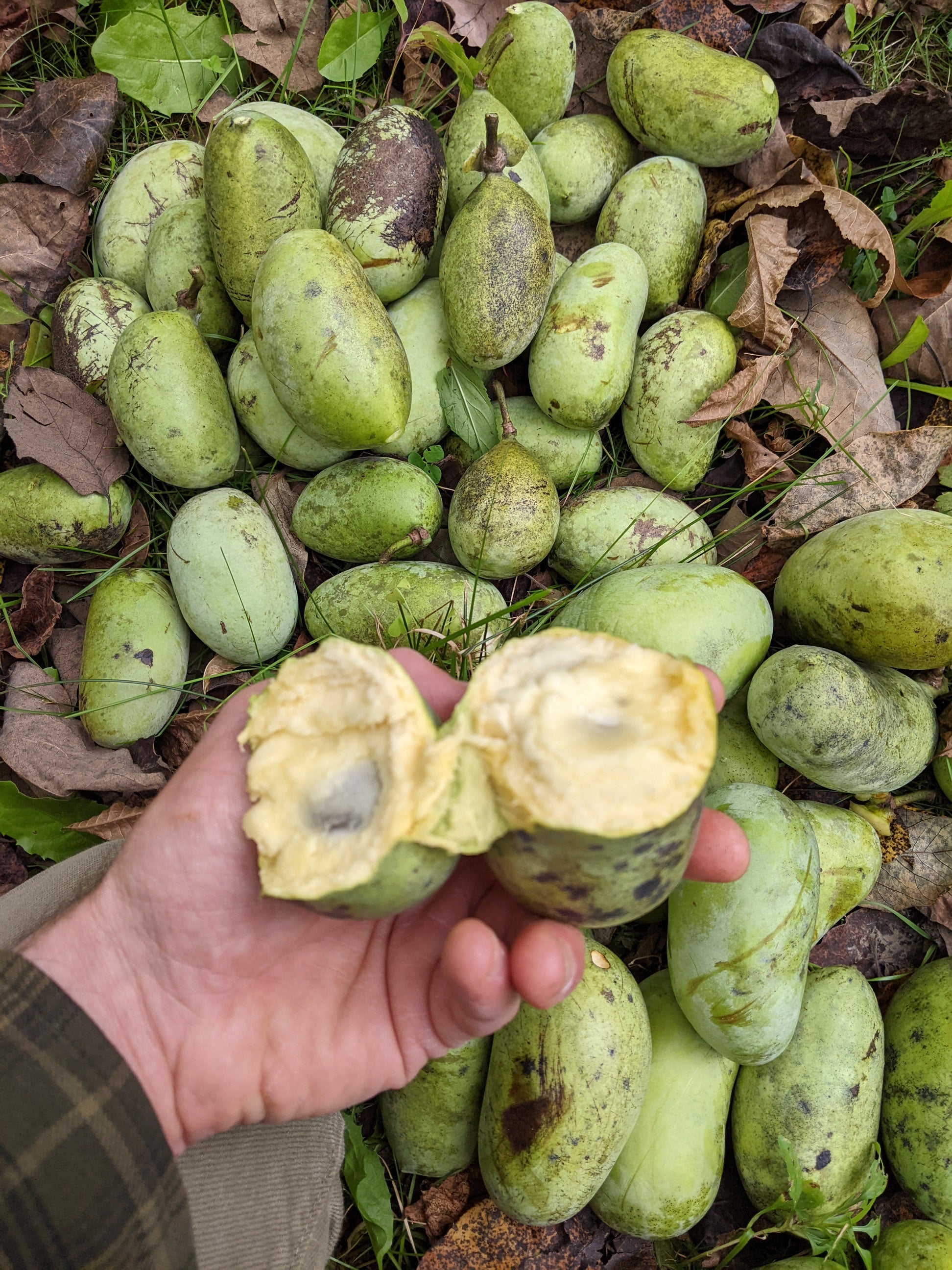
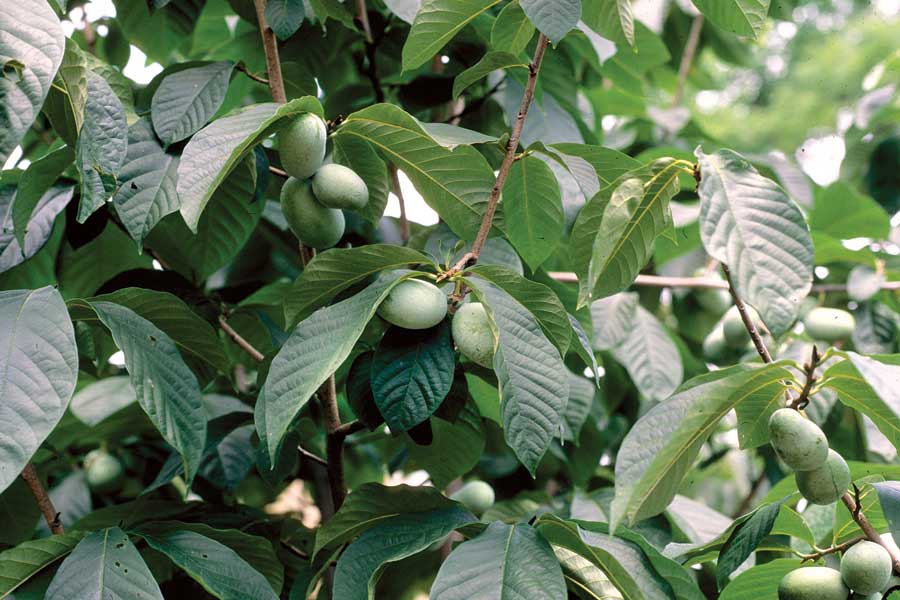

Pawpaw trees
Pawpaw, Asimina triloba, has somewhat mythical status up here in the north parts of its range. Indigenous people throughout southeast Turtle Island included pawpaws in their food systems for many centuries. In Ohio pawpaw is the official state fruit, celebrated with a weekend-long festival each autumn. Kentucky State University hosts a national gene bank and is the centre of pawpaw breeding and education nowadays. But this side of the Great Lakes? Most people here have heard of pawpaws, but never tasted one. Let’s change that.
Pawpaws are the largest fruit native to Turtle Island, and do indeed taste like a mix of banana, pear, and mango. Some are a little reminiscent of durian. It’s hard to describe, and best experienced for yourself.
My pawpaw seedlings are two or three years old, and around 12"-18" tall.
Pawpaws are generally a small tree, but some can grow upwards of 20’ tall. They tend to prefer at least partial shade when young, but will fruit best in full sun. That said, I have seen them produce delicious fruit in full shade. Also, pawpaws are tolerant to juglone, the chemical emitted by black walnuts.
It has been noted that many places used by Indigenous people prior to colonization – villages, petroglyphs, ceremonial and burial sites – have pawpaw patches growing around them, which is a strong indicator that pawpaws had a role in Indigenous orchards. Many Indigenous languages have a word for pawpaw, and the Shawnee, and likely other nations, had a pawpaw moon – ha’siminikiisfwa, in Shawnee – named for the time when pawpaws are ripe.
Pollination:
Pawpaws require cross-pollination with another pawpaw tree, so you need at least two for our own pawpaw patch. Ideally these are planted somewhat close together – say between 10’ – 30’ apart.
Parentage:
All my trees are seedlings from well-established parent trees in the Guelph and Hamilton area. There are many named pawpaw cultivars out there, but planting them in the north of their range is risky – the grafting wood likely came from southern-acclimatized trees, and the risk is that a cold winter will kill the tree down to the graft (the seedling it was grafted onto will generally be hardier than the cultivar, and will regrow from the roots).
The fruits of pawpaw seedlings will vary slightly between individual trees – for example, some individuals may have fruits with a higher flesh-to-seed ratio, or taste a little better than others – but the variation is far less than the variation among apple seedlings.
References:
Wyatt, G.E., Hamrick, J.L., Trapnell, D.W. The role of anthropogenic dispersal in shaping the distribution and genetic composition of a widespread North American tree species. Ecology and Evolution. 2021.
Searching For The Pawpaw’s Indigenous Roots.
Indigenous names map courtesy of Decolonial Atlas.
